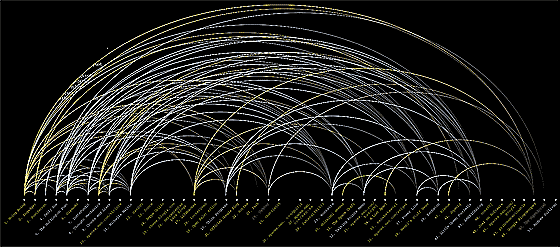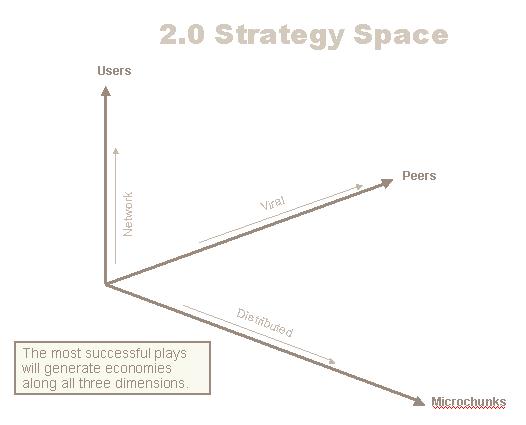O’Reilly talks about What Is Web 2.0, including these Web 2.0 Design Patterns
1 The Long Tail
Small sites make up the bulk of the internet’s content; narrow niches make up the bulk of internet’s the possible applications. Therefore: Leverage customer-self service and algorithmic data management to reach out to the entire web, to the edges and not just the center, to the long tail and not just the head.
2 Data is the Next Intel Inside
Applications are increasingly data-driven. Therefore: For competitive advantage, seek to own a unique, hard-to-recreate source of data.
3 Users Add Value
The key to competitive advantage in internet applications is the extent to which users add their own data to that which you provide. Therefore: Don’t restrict your “architecture of participation” to software development. Involve your users both implicitly and explicitly in adding value to your application.
4) Network Effects by Default
Only a small percentage of users will go to the trouble of adding value to your application. Therefore: Set inclusive defaults for aggregating user data as a side-effect of their use of the application.
5 Some Rights Reserved.
Intellectual property protection limits re-use and prevents experimentation. Therefore: When benefits come from collective adoption, not private restriction, make sure that barriers to adoption are low. Follow existing standards, and use licenses with as few restrictions as possible. Design for “hackability” and “remixability.”
6 The Perpetual Beta
When devices and programs are connected to the internet, applications are no longer software artifacts, they are ongoing services. Therefore: Don’t package up new features into monolithic releases, but instead add them on a regular basis as part of the normal user experience. Engage your users as real-time testers, and instrument the service so that you know how people use the new features.
7 Cooperate, Don’t Control
Web 2.0 applications are built of a network of cooperating data services. Therefore: Offer web services interfaces and content syndication, and re-use the data services of others. Support lightweight programming models that allow for loosely-coupled systems.
8 Software Above the Level of a Single Device
The PC is no longer the only access device for internet applications, and applications that are limited to a single device are less valuable than those that are connected. Therefore: Design your application from the get-go to integrate services across handheld devices, PCs, and internet servers.






